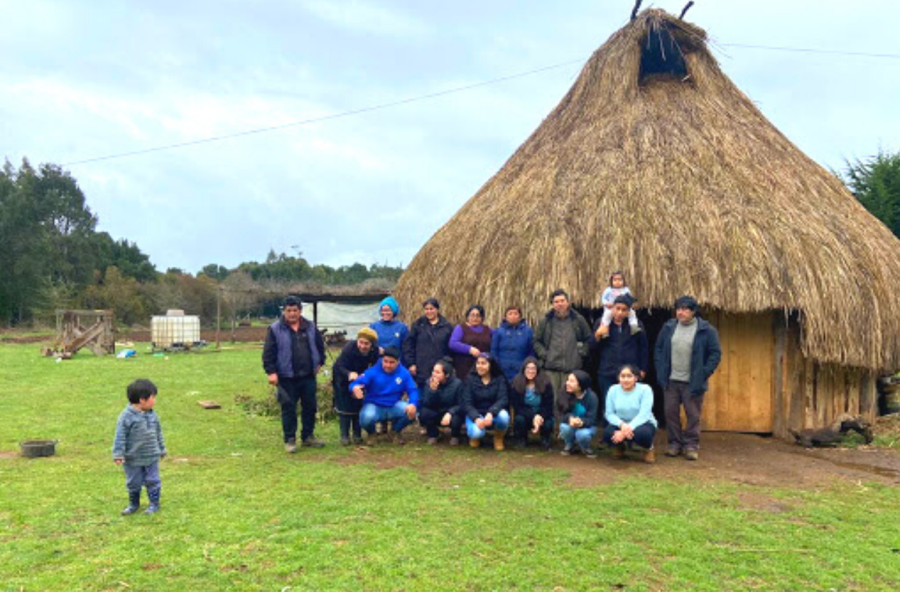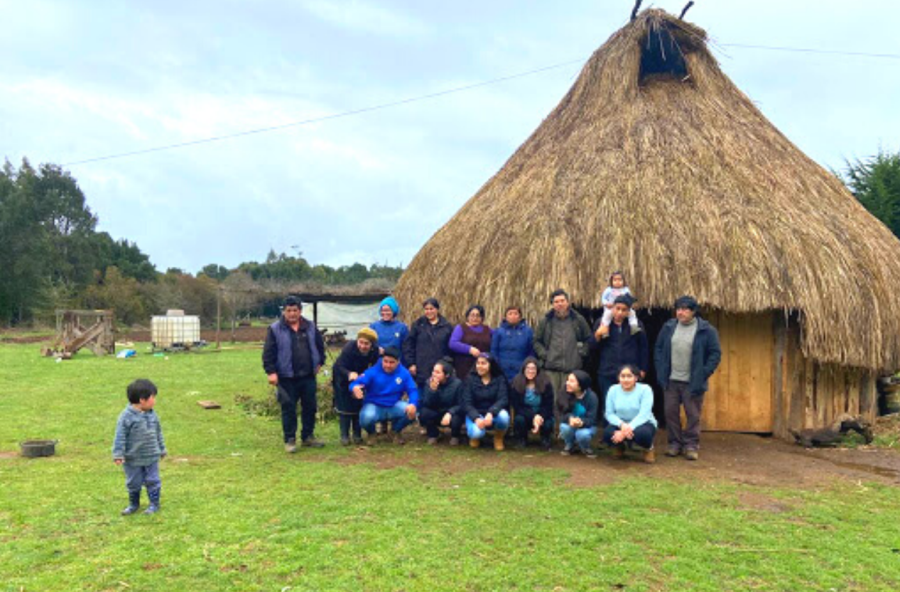"Before the military give up power, we want the world to know that they are murderers. I think the moment will come when everything will be known."
- a GAM leader
The New York Times, 4 December 1985
Cultures of resistance reveal how protest is sculpted by violence as well as how violence itself can be transformed into possibilities for change and hope. They can show us how cults of death can be transfigured into celebrations for life. This is certainly true for the human rights movements in Latin America, which have arisen out of some of the most repressive regimes in the twentieth century. What is most striking about these movements is that they are primarily led by women "who would never before in their lives have considered demonstrating in the street against the government on any issue whatsoever". It was while making the rounds of the public institutions of death - the hospital, morgue, cemetery, police headquarters, army garrison - and receiving derisive replies to their incessant questions about missing relatives ("your son has run off with someone" or "he's left the country") - that women in almost all countries of Latin America came to organize themselves into cultures of resistance. As the middle-class Argentinian housewife, Mrs. Azucena DeVicenti, who was well into her sixties in 1977, announced to 13 other mothers,
It's not here [at the morgue] we ought to be - it's the Plaza de Mayo! And when there are enough of us, we'll go to the Casa Rosada and see the President about our missing children!.
These madres of the Plaza de Mayo, now numbering several hundred, have become a political force to be reckoned with by both the Juntas and the Alfonsin government, as have other "motherist" groups throughout Latin America such as the Group of Mutual Support (GAM) in Guatemala, the Committee of Mothers of the Disappeared and Detained (COMADRES) in El Salvador and the Agrupacion of the Detained-Disappeared in Chile.
But what political conditions gave rise to such protest? How is it that these women are more or less tolerated by or at least allowed to exist within such repressive states? What actions have they taken, and at what cost?
The National Security State and the Tactic of Disappearance
Invoking "Christian and Western civilization" and family and motherhood, the National Security Doctrine (which has been used in Latin America since the 1960s) justifies "necessary" human rights violations against civilians. This doctrine (which does not distinguish between political dissent and armed conflict) views all social conflict, such as marches, strikes and community organizing, as potentially dangerous to state security, and attempts to maintain control by surveillance, torture and assassination. Disappearance, though, has been the tactic par excellence of these national security states.
Although more visible violations produce negative reactions in world opinion, secret and "anonymous" disappearances give no evidence and provide no identification of either the victim or the perpetrator. Causing people to disappear is the perfect crime, with the victim and his or her relatives as silent witnesses. The victim is denied martyrdom and those left behind are prohibited the final ritual of bereavement. "Disappearance" then is a form of censorship of memory by the state. More than 90,000 persons are disappeared in Latin America today (where the word is now a verb) - a high percentage of them are young male adults from all classes, political persuasions and religious faiths. Often, they are members of the political opposition, of particular ethnic groups (such as the indigenous population in Guatemala) or live in a zone targeted for "security" operations. In the more urbanized societies of Argentina and Chile, more victims have been working-class and middle-class than in the more agricultural societies of Guatemala and El Salvador, where peasants and slum dwellers have been the primary target populations of security forces.
Such national security states, however, have made some major miscalculations: (1) that terror is a sufficient form of long-term adequate control, (2) that parents who may not share their children's political opinions, or women who were never as politically active as their husbands or children, would not react strongly and publicly in the event that a family member is kidnapped because of having (or merely is suspected of having) "subversive" opinions and (3) that relatives of victims from different classes and political or religious persuasions would not support one another in an active and political manner. Women's actions, however, reflect how wrong these states have been; previously apolitical madres de familia (mothers of families) have become a powerful class - and ethnically mixed form of opposition to repressive states. For example, 80 percent of the more than 1,000 members of GAM are indigenous people, reflecting both the magnitude of the violence in the highlands (with the massacre of between 45,000 and 72,000 Indian peasants between 1982 and 1984) and the nascent Indian-ladino alliances forged in the late 1970s. Many of the original middle-class, ladino members of GAM are relatives of the 19 students and professors kidnapped at the university in early 1984 over a four-month period. United by pain and grief, these two groups are now allies. Moreover, given that it is literally the first internal human rights organization to survive in Guatemala (with all other leaders assassinated or exiled), GAM demonstrates that repression is no longer a sufficient form of control against social conflict in Guatemala.
The tactic of disappearance, moreover, has its paradox: because it is not absolutely certain that the people who have been kidnapped are dead, those "left behind" can remain hopeful; many relatives translate the vague limbo of the unknown and the uncertain into a positive force of protest. Contrary to the final assurance of death, the very absence of bodies has created a presence of protest for ongoing life. As one Indian peasant GAM member told me, "If they would just tell me that he is dead and allow me to bury him, then at least I'd know that he no longer exists."
Actions by These Cultures of Resistance
Using symbols of the church and of motherhood, all these groups have sought to present themselves as apolitical and nonviolent. They "peacefully occupy" the National Assembly, the Cathedral and the National Palace in Guatemala with candles and flowers, and block traffic every Friday between 3 and 4 PM in front of the Public Ministry, playing flutes, drums and wooden rattles and asking repeatedly over loudspeakers: "Where are our loved ones? Perhaps right now they are suffering inhumane treatment at the mercy of cruel and evil persons." They have peacefully marched around the Plaza de Mayo in Argentina every Thursday at 5 PM for the last ten years, wearing white headscarves embroidered with the names of their disappeared loved ones. They demonstrate in front of the women's prison and march through the streets to the National Cathedral in El Salvador with white headscarves, chanting "Justice, Justice, We Want Justice!" They calmly chain themselves to the fence of the defunct Congress, singing songs for the return of democracy in Chile. Many wear worn, fragile photos, more often carried next to the heart, which reassert a timeless presence of the disappeared and negate "the chronicle of announced death or disappearance" each day in the newspapers. These images help to break the state's monopoly over memory.
While remaining faithful to the Catholic language of sacrifice and obedience - such as "our calvary and pilgrimage is indescribable" (GAM) - the madres have politicized these traditional meanings beyond what the church hierarchy often desires. For example, the madres say:
[Our action] is to remember the sacrifice of Christ nailed to the cross. We also have our Christ and we are re-living the pain of Mary. But we are not permitted to console him with our presence. We are also Christians, the same as those who proclaim themselves to be servants of Christianity and yet are our executioners.
These women portray a conservative image of wives without husbands to care for them: as madres de familia "looking for our children," they put photos of children in newspaper ads asking "Where Is Papa?" [Donde Está Papito], with appeals made to the national security state to respect "the natural order" that it has destroyed. One GAM announcement stated that two of its members had received death threats:
It is not enough for them to be responsible for one of the most aberrant crimes - kidnapping - but they have the shamelessness to intimidate two madres de familia, presently without the protection of their husbands…
However, this Catholic image of woman-as-mother-needing-protection is used by these women as precisely that - a form of protection by calling on the state to fulfill its rhetorical claims. Playing on the traditional image of women held by the police and military, some groups including the Plaza de Mayo madres - but not GAM - have made a conscious decision not to allow men to participate in order to prevent violence:
To be young and male in Argentina carries a presumption of guilt; they are a priori suspect of subversive ideas...We decided we would be the standard bearers, we women of mature age, madres de familia, with all that that represents in Argentinian tradition.
Thus, what may be conservative elements under different, less-repressive circumstances, are being used by these women in politically new ways. Cultures of resistance often use what is at hand and what they know best to transform repression into possibilities for change.
What is perhaps most striking, though, about these female cultures of resistance is their refusal to be silenced or to dampen their defiance in the face of repression. For example, they refuse to believe what the government tells (or denies) them, as did this middle-class Agrupacion housewife in Chile:
A female CNI (secret police) interrogator: "You think that I'm so stupid that I'm going to believe what you're telling me?"
Agrupacion mother: "And you think that I'm so stupid that I'm going to believe that the government doesn't know where my son is".
Nor do these women accept the State's audacious claim that a human being has neither the right to life nor to death, as one GAM leader indicated in an open letter to her husband: "they will never, ever be able to make honorable men vanish into thin air, as if they were nothing."
The presentation of hundreds (thousands in Argentina and Guatemala) of writs or habeas corpus to the courts (often without the help of lawyers, who feared for their lives) and the demand for the immediate release of prisoners has transformed these women's individualized, private searches for relatives to a more massive and public protest on behalf of everyone who has disappeared in their country. With the founding of FEDEFAM (Federation of Relatives of the Disappeared-Detained) in 1981, these women have become more aware of the need to protest against the tragic consequences of National Security Doctrine throughout Latin America. As one Agrupacion member told me:
[Our struggle] is about a common struggle against a common enemy: a state terrorism which permits the military to capture, torture and assassinate whomever they want in the name of the so-called National Security Doctrine, scorning all norms of justice.
What Cost Defiance?
First defined by government officials as outcasts and "mad women," these women were perceived by most of these regimes as harmless, apolitical mothers. But when their despair did not remain private and their actions went beyond the traditional, "natural" demands of mothers searching for their lost relatives (and they began to receive international attention), these women became subject to the National Security State's definition of "subversion," which made them as vulnerable to violence as their own disappeared relatives. Unaccustomed to any form of opposition and especially public denunciations of its authority, these regimes sought to terrorize these groups of women into submission. As one government spokesman in Guatemala claimed, "GAM will be put in its place". All these groups have suffered; more than 12 members of the Plaza de Mayo mothers have been tortured and disappeared (including Mrs. Azucena DiVicenti). Two of the GAM leaders were tortured and assassinated (together with one of the mother's two-year-old son). Many others were threatened and exiled (with leaders still having to be escorted everywhere within Guatemala), and several COMADRES leaders were repeatedly tortured and raped in El Salvador. It is clear that such defiance for women, even as mothers, has a high cost, as one exiled GAM leader told me:
The government doesn't distinguish among men, women, children, catechists, priests, professors, workers: it kills them all.
(Women are often dealt with in particularly brutal ways in such militarized societies. Attempts to destroy their sense of self through their sexuality and body image by humiliation, repeated rape, prolonged torture and genital and breast mutilation are common.)
Conclusion
With the violent destruction of the family, it is not surprising that women, with their centuries-old sacrifice for (and obedience to) the family - their responsibility for the arrival and exit of life itself - should take the State and the Church at its word. State violence is forcing these women to turn to radical means to hold their families together. In protest against the state's actions, they use the very symbols that the state claims' to be protecting and securing: Motherhood and Family. By staging demonstrations with flowers, candles, photos of the relatives and songs, they counter the cult of death with a celebration of life. By openly challenging the state, they help to demystify its methods of control. It is the final irony that the very tactic of clandestinity - disappearance - by the state should unintentionally create protest by its very refusal to acknowledge life or death. Yet it is because of this contradictory doctrine that these women's resistance is possible; these mothers have had to behave as mothers in order to survive (although even that is no guarantee). Continuing to reproach the regimes that took their husbands, sons and brothers away, they believe that if society does not seek to restore the past to its children and grandchildren, then there can be no hope for a just social order of any kind. These women remain powerful testimony to the limits of repression and the autonomy of culture.
Article copyright Cultural Survival, Inc.



